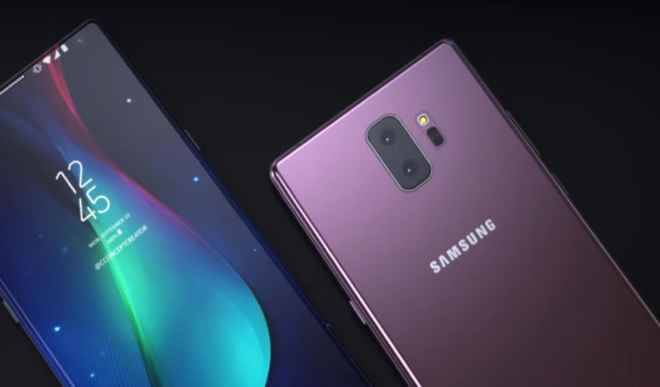Early release of Samsung’s best ever smartphone/phablet: Galaxy Note 9/9 Plus – Part I
In an apparent bid to beat the next iPhone to the market and/or make up for the lackluster performance of Samsung S9/S9 Plus launched in March of this year, it is wildly rumored that Samsung will be launching Galaxy Note 9/9 Plus earlier than normal this year. There are several rumors about the launch date, […]


In an apparent bid to beat the next iPhone to the market and/or make up for the lackluster performance of Samsung S9/S9 Plus launched in March of this year, it is wildly rumored that Samsung will be launching Galaxy Note 9/9 Plus earlier than normal this year. There are several rumors about the launch date, including late July and 9 August 2018. As to the release date, there are no details, but releasing the new Note will probably happen early enough to beat the next release of iPhone, the arch competing product in the line of high-end smartphones. Consistent with the sequence of release of Galaxy Note vis-a-vis the Galaxy S series, a launch/release date of sometime in January 2019 is being rumored for the latter. This will probably carry the model names Galaxy S 10/S 10 Plus. Today’s article will summarize the last few releases by Samsung and Apple, so you can appreciate the features of Galaxy Note 9/9 Plus when they are presented in next week’s article.
To put things in perspective, Samsung launched Galaxy S9 and S9 Plus on 25 February 2018 at this year’s Mobile World Congress in Barcelona, Spain, and released the devices to the public on 16 March 2018. Moreover, Apple launched iPhone X, iPhone 8, and iPhone 8 Plus on 12 September 2017 on the occasion of the 10th anniversary of iPhone, while Samsung made Galaxy Note 8 and 8 Plus available for purchase in the stores on 15 September 2017. So, the neck and neck between the launching of iPhone and the Galaxies is obvious. It’s quite clear by now that Samsung has two lines of smartphones (S and Note) whereas Apple has just one (iPhone). Each of these, for both Apple and Samsung, comes in two models – the regular and the “Plus” series.
Galaxy Note 8 had a lot to prove when it was released, to get people’s mind away from the disaster with Galaxy Note 7, which famously burst into flames unprovoked, after shipment, in numerous incidents all over the world. The failed product was later withdrawn from the market. Being the immediate successor to Galaxy Note 7, Galaxy Note 8 had its work partially cut out for it, to right the disastrous wrong with Note 7.
Note that iPhone X, alongside iPhone 8 and iPhone 8 Plus, though launched on 12 September 2017, were not released until November 3, 2017. Of the three phones, by far the device that grabbed the headline is iPhone X; precisely for its (then) new infrared scanning technology called Face ID. This feature has never existed before on any other iPhone device.
Galaxy Note 8 did not have any issues with its batteries, but then there wasn’t much luster either. Not to Note 8’s credit, in a sense, is the fact it is very similar to Galaxy S8 Plus released earlier. The main distinguishing differences are that Note 8 is a few millimeters larger in its overall external dimensions, while its 6.3-inch “phablet-signature” diagonal display dimension is really not that much larger than Galaxy S8 Plus’s 6.2-inch. The Note 8 also has 2GB of extra RAM over S8 Plus which has 4 GB. Perhaps a notable difference is the two rear 12-megapixel cameras in Note 8 compared to one (camera) in S8 Plus. However, Note 8 is the first Samsung smartphone device to come with two lenses on the rear.
The Galaxy S9 and S9 Plus were intended to match iPhone X, but this objective might not have been realized, even though iPhone X itself was not exceptionally great, and was quite pricey. S9 brought back the headphone jack – which is otherwise extinct in other high-end phones – with enhanced stereo surround sound to boot. S9’s answer to iPhone’s Face ID, dubbed “Intelligent Scan,” is no match for Face ID. In S9, you can unlock your phone with facial recognition, iris scanning, or a combination of both, both techniques being derived from separate capabilities in S8, but are now (both) supported in S9. The resulting unlock mechanism is still quite inferior to the Face ID tool in iPhone X. In the words of Jessica Dolcourt of cnet.com, Samsung’s technology is not yet able to “map your face with tens of thousands of infrared dots like iPhone X does.”
Thus, the reviews of the augmented reality (AR) in Galaxy S9/S9 Plus were unfavorable relative to those of Face ID in iPhone X. Further on this point, reviewers find AR in Galaxy to be of low quality and incapable of tracking your face well, so much so that you may not even recognize your own face. One reviewer considers this a “me-too” feature in S9, and to be profoundly inferior to a parallel capability (animojis) in iPhone X. The poor AR capability is believed to be due to the low quality of the camera in S9, relative to that on the iPhone. That is, a regular 2D camera, versus iPhone X’s 3D tracking camera. S9’s emojis do not capture your smile, which is quite creepy. Moreover, when you record a video message of yourself as a human avatar, the avatar does not match your skin or hair color, also doesn’t smile!
Will Galaxy Note 9/9 Plus, which is rumored to have a launch date of late July or 9 August 2018 make the cut?
To be continued next week…
